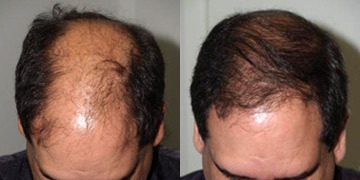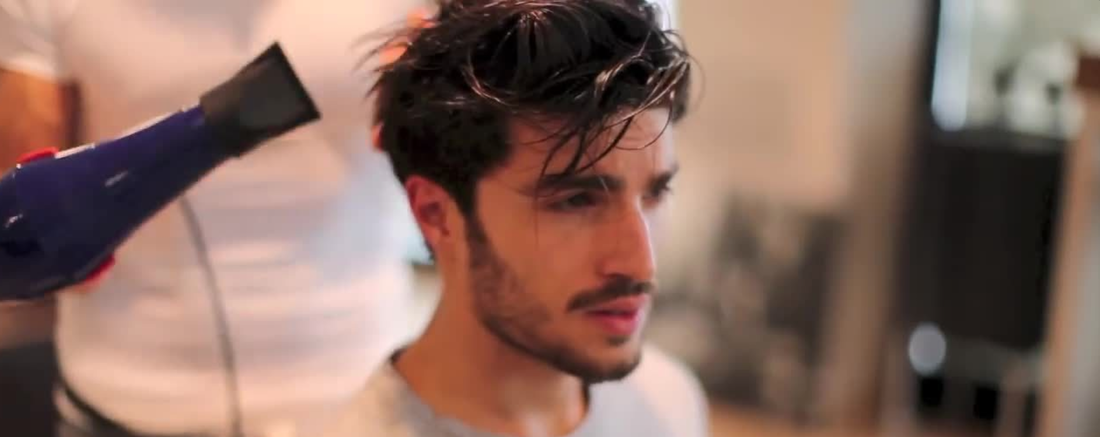|
7/31/2016 0 Comments Hair Transplants: What to ExpectReviewed by Michael W. Smith, MD
Like good health and youth, most of us take our locks for granted -- that is, until they're gone. For many people, a hair transplant can help bring back what looks like a full -- or at least a fuller -- head of hair. If thinning up top or going bald really bothers you, the procedure can be one way to feel more confident about your looks. But first talk with your doctor about what you can expect during and after the surgery. What Is a Hair Transplant? It's a type of surgery that moves hair you already have to fill an area with thin or no hair. Doctors have been doing these transplants in the U.S. since the 1950s, but techniques have changed a lot in recent years. You usually have the procedure in the doctor's office. First, the surgeon cleans your scalp and injects medicine to numb the back of your head. Your doctor will choose one of two methods for the transplant: follicular unit strip surgery (FUSS) or follicular unit extraction (FUE). With FUSS, the surgeon removes a 6- to 10-inch strip of skin from the back of your head. He sets it aside and sews the scalp closed. This area is immediately hidden by the hair around it. Next, the surgeon's team divides the strip of removed scalp into 500 to 2,000 tiny grafts, each with an individual hair or just a few hairs. The number and type of graft you get depends on your hair type, quality, color and the size of the area where you’re getting the transplant. If you’re getting the FUE procedure, the surgeon’s team will shave the back of your scalp. Then, the doctor will remove hair follicles one by one from there. The area heals with small dots, which your existing hair will cover. After that point, both procedures are the same. After he prepares the grafts, the surgeon cleans and numbs the area where the hair will go, creates holes or slits with a scalpel or needle, and delicately places each graft in one of the holes. He’ll probably get help from other team members to plant the grafts, too. Depending on the size of the transplant you’re getting, the process will take about 4 to 8 hours. You might need another procedure later on if you continue to lose hair or decide you want thicker hair. Expectations and Recovery After the surgery, your scalp may be very tender. You may need to take pain medications for several days. Your surgeon will have you wear bandages over your scalp for at least a day or two. He may also prescribe an antibiotic or an anti-inflammatory drug for you to take for several days. Most people are able to return to work 2 to 5 days after the operation. Within 2 to 3 weeks after surgery, the transplanted hair will fall out, but you should start to notice new growth within a few months. Most people will see 60% of new hair growth after 6 to 9 months. Some surgeons prescribe the hair-growing drug minoxidil (Rogaine) to improve hair growth after transplantation, but it’s not clear how well it works. Risks and Costs of Treatment The price of a hair transplant will depend largely on the amount of hair you’re moving, but it generally ranges from $4,000 to $15,000. Most insurance plans don’t cover it. As with any kind of surgery, transplants have some risks, including bleeding and infection. There’s also the chance for scarring and unnatural-looking new hair growth. Around the time new locks start to grow, some people have inflammation or an infection of the hair follicles, called folliculitis. Antibiotics and compresses can relieve the problem. It’s also possible to suddenly lose some of the original hair in the area where you got the new strands, called shock loss. But most of the time, it’s not permanent. Talk with your doctor about these risks and how much improvement you’re likely to get from the surgery. He can help you decide if it's a good option for you. Here is a Good Site for Pics, Q&A, Costs https://www.realself.com/Hair-transplant-surgery/reviews
0 Comments
7 hairstylist reveal their secrets for having bangs. 1. Take Baby Steps
“Start slow; don’t do a lot at first,” suggests Bumble and bumble’s Jimmy Paul to bang virgins. “See how a few wispy bangs look first. You can always do more if you love it, and if you don’t, you can just push them aside.” That said, Paul loves how bangs can also function as a curtain. “They’re great to hide behind, and they’re gentler on your forehead than Botox.” 2. Go Long at First “Start off a little longer than you think,” advises James Pecis. “Hair always shrinks and retracts, especially if it’s cut wet or has a natural wave. You can always cut more,” he says. “When they’re too short, you feel exposed—sort of like forgetting to wear pants in the morning.” 3. Bangs Can Be the Best of Both Worlds “If you have long hair but don’t want to cut it all off, bangs are a great way to make a big change while keeping the length,” says Orlando Pita. “I tend to prefer long, sexy bangs, anyway.” 4. Consider a Cowlick “If you have a cowlick, don’t get a straight fringe,” warns Pecis. “Unless you’re ready for the constant maintenance of fighting the cowlick every morning.” 5. Plan Ahead “Ask your Stylist for A ‘grow out’ clause,” says Sally Hershberger. “Some bangs, if they’re long enough, can blend into layers in a matter of one haircut cycle.” 6. Embrace Your Natural Texture “I love curly hair with bangs,” says Paul. “It’s a look that’s not for the faint of heart, but it’s wildly fashionable. I also love a wide, thick bang, but that’s really a commitment. It’s the hardest to grow out.” 7. Go Against the Grain “Blow drying them yourself takes practice,” says D.J. Quintero of Serge Normant at John Frieda. “When you’re drying them, guide them in the opposite direction that they naturally fall.” 8. Bangs First “I always begin with the bangs [in a blow out], for two reasons,” says Bricel Perez of DreamDry Blow Bar in New York’s Flatiron district. “First, I want to tame annoying cowlicks while they’re still wet. But, for stylists, doing them first also means we still have the clients’ attention. That way, we can ask how she likes them to look before she loses focus and goes back to her phone.” 9. Spray. Stay. “I always finish with a bit of hair spray when I’m done,” says Serge Normant, who taps his Meta Luxe Hair Spray. “It’s kind of insurance that they won’t misdirect. Just don’t use a heavy, wet spritz.” 10. It’s Just Hair “We’re going through a short fringe moment right now,” says Pecis, who uses Oribe Matte Waves Texture Lotion. “This season of shows had a surprising amount of girls who went for the above eyebrow chop. Hair grows back. Cut a fringe and be cool.” 7/29/2016 Trending in TextureThe styles, techniques, products, and attitudes that are shaping texture in 2016(click on the picture below for the article from Texture magazine)
There’s so much you can do with men’s hair these days that you’ll begin to wonder whether the sky is the limit! And for those men who have one of many reasons to add volume to their hair, there are many options available to them as well.
But, before we get down to finding the ways to increase the volume of your hair, it is important that you understand why increased volume is liked by more men these days. One reason for men’s liking for more volume in their hair could be that they want to give a feeling of being younger in the workplace. Another reason could be that they’re required to attend a special occasion, like a costume party, for which they’re required to add volume to their hair. Whatever the reason, the good news for men is that there are a few ways to add volume to their hair in a short period of time. Follow this link for cool ways to add volume to your hair 7/27/2016 Genius Hair Hacks for Thin-Haired GirlsFor those of you with finer-than-fine locks, a full and voluminous head of hair is at the top of your wish-list. Sure thin hair means minimal hair sweat during the hottest days of summer, and it takes you roughly 35 seconds for a full at-home blowout, but what girl doesn’t aspire for mega-glam bombshell volume? Thin hair can be a major pain, but you don't have to be born with tons of hair to rock a full, bouncy mane.
Thin-haired girls, scroll through for some expert hacks to pump up the volume on your thin locks. 1. Part your hair on the opposite side. If you normally part your hair on the left side, blow dry it like normal, but part it on the right. Your hair gets used to your part, so flipping it in the other direction will make your roots stand up. 2. Add some waves. Pin-straight strands lays flat against your head, making even the thickest hair appear thinner. If you have wavy hair, try embracing your natural texture, or add some waves with a curling wand. The added texture will make your hair look fuller. 3. Back-comb your hair. Use a teasing comb to tease your roots. Comb strands over it and use a volume hairspray to keep the pumped-up look in place. 4. Get short layers. A blunt cut can weigh your hair down. Adding light layers will give your hair shape and movement. 5. Blow-dry your hair upside down. Flip your head upside down when it's still wet and blow dry. When you get to your roots, use your fingers to softy tousle – this will help them to stand up, creating even more volume. 6. Sprinkle your roots with a volumizing powder. This is a great texturizer, adding grip and tons of volume to your hair. 7. Rock a lob. Long hair is heavy, so it will lie flatter against your head. Try a trendy crop for more texture and volume. 8. Skip the serum. Serum makes your hair sleek and frizz-free, which also makes it lay flat. While that might be ideal for an up-do, if you're wearing you're hair down, you want to keep all the natural texture you have, so skip the serum. 9. Get highlights and lowlights. When your hair is all the same color, it appears thinner. Adding multiple hues do not only looks more natural but will also give you dimension, making limp locks appear fuller. 10. Swap your paddle for a round brush. Paddle brushes are great for getting a sleek, straight look. But to amp-up your hair, use a round brush while blow-drying. It makes it easier to grip hair and create more tension so you can get more lift. 11. Apply a volume root lift spray to your roots before blow-drying. This will help keep your roots upright, which will stop your 'do from falling flat after 10 minutes. 12. Let your hair air dry. Hot tools can damage your hair and cause fine hair to break. The healthier your hair, the longer and fuller it'll be. Give your blow dryer and curling iron a break whenever possible, and always use a heat protectant spray to protect strands from heat damage. With these hair hacks, even the thinnest haired-girls can reach supermodel hair heights! |
Hair by BrianMy name is Brian and I help people confidently take on the world. CategoriesAll Advice Announcement Awards Balayage Barbering Beach Waves Beauty News Book Now Brazilian Treatment Clients Cool Facts COVID 19 Health COVID 19 Update Curlies EGift Card Films Follically Challenged Gossip Grooming Hair Care Haircolor Haircut Hair Facts Hair History Hair Loss Hair Styling Hair Tips Hair Tools Health Health And Safety Healthy Hair Highlights Holidays Humor Mens Hair Men's Long Hair Newsletter Ombre Policies Procedures Press Release Previous Blog Privacy Policy Product Knowledge Product Reviews Promotions Read Your Labels Recommendations Reviews Scalp Health Science Services Smoothing Treatments Social Media Summer Hair Tips Textured Hair Thinning Hair Travel Tips Trending Wellness Womens Hair Archives
April 2025
|
|
Hey...
Your Mom Called! Book today! |
Sunday: 11am-5pm
Monday: 11am-6pm Tuesday: 10am - 6pm Wednesday: 10am - 6pm Thursday: By Appointment Friday: By Appointment Saturday: By Appointment |






 RSS Feed
RSS Feed